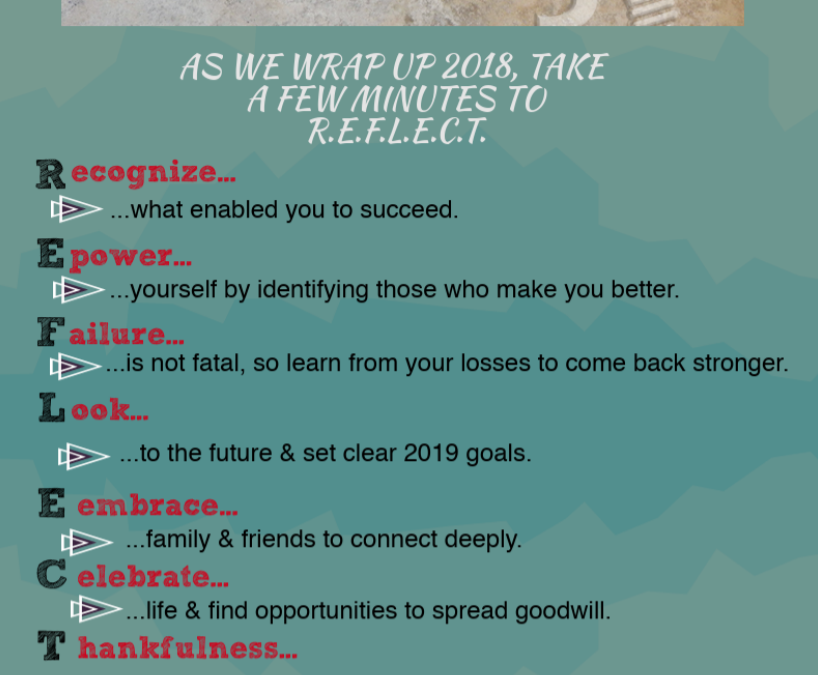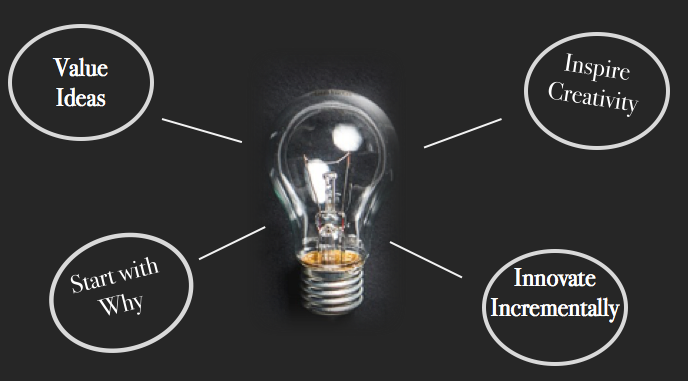
by Joe & T.J. | Oct 23, 2019 | #TheThreeMinuteChallenge, Creativity, Culture, Disruption, Innovation, Leadership, Learning to Lead

It’s not because things are difficult that we dare not venture. It’s because we dare not venture that they are difficult. ~ Seneca
Organizations that drive innovation, and feed people’s creativity to think in new and challenging ways, reward risk-taking to create new boundaries. And although leaders often realize the importance of creating a culture of innovation and creativity, their day-to-day actions and reactions to the business side of things can communicate the contrary. For creativity to be a norm, people require time and space, which can quickly be compromised in any fast-paced, bottom-line driven environment. Instead of lifting the talented rebels (who were hired to catapult the company forward), leaders can put people in a position to protect the status quo, favoring basic levels of control and compliance.
It’s unfortunate, but creativity is more often stifled than sustained. Even in organizations that do well with innovation, creative minds can learn quickly that real risk-taking will only be questioned to death. Unless leaders are truly willing to support and reward risk-takers, most people will succumb to conventional thinking. In most cultures, the risk, then, becomes in taking risks versus the other way around.
The problem is that without innovation and the freedom to explore, human capacity is diminished and workforce engagement is stemmed. No one enjoys working in a stale environment with the humdrum of tedium. The good news is that it doesn’t have to be this way. With the right focus on creativity, leaders can bring innovative ideas to the surface. It starts with a creativity framework for growth through reflection and change.
Challenge Yourself–TPA: A Framework for Growth Through Reflection

Think: When was the last time someone presented an idea that contradicted the current program of work? What is your general response to discord and objection? When someone does take a risk, do you admonish, ignore, or reward it? If you want others to stick their necks out for the sake of doing things differently, you have to do the same.
Plan: Pick one initiative, activity, or program that needs new life breathed into it. Assemble a team of people and push their thinking to make improvements. Then, support the ideas they generate. Being supportive of new ideas is the way that leaders model their expectations for creativity, not necessarily by having new ideas themselves.
Act: Be sure to reward risk-taking by being vocal and supportive of the people who push the existing conditions. You cannot just “allow” creative people to exist, they need explicit support. Next time someone has a new idea, use public praise to back them up.
Stay tuned for more challenges, reflection questions, leadership models, podcasts, and more by following dereka206.sg-host.com. It’s our job to curate, synthesize, and communicate so that you can lead better and grow faster. In a world plagued by nothing but noise, we help you by getting to simple.
TheSchoolHouse302 is about getting to simple by maximizing effective research-based strategies that empower individuals to lead better and grow faster.
Joe & T.J.

by Joe & T.J. | Dec 30, 2018 | Communication, Daily Habits, Data, Disruption, District Office Leadership, Education, Energy, Equity, Excellence, Failure, Feedback, Fitness, Focus, Fulfillment, Goal Setting, Innovation, Leadership, Learning to Lead, Listening, Long-Term Decision-Making, Modeling, Motivation & Retention, Networking, Organizational Growth, Organizational Leadership, Planning and Preparation, Positivity, Principal Leadership, Professional Dialogue, Reflect, Relationships, Self-Efficacy, Service Leadership, Systems Thinking, Teacher Leadership, Teamwork
Every month at TheSchoolHouse302, you get a
blog post with a leadership development model, a
podcast with a leading expert, a “
read this” with three book selections, and a review and reflection tool–all on a particular topic of leadership to help you lead better and grow faster. Posts are always blasted out on Sundays so that leaders can think and prepare for the week ahead.
In months when we have 5 Sundays, we also provide an infographic to help visualize and solidify the concept. This month, as we end our year, we want to R.E.F.L.E.C.T. on several powerful concepts to propel our success into the future of 2019. We hope you enjoy and Happy New Year.

As always, please like, follow, and comment. If you have topics of interest, guests you want us to interview, or books that we should read and recommend, please let us know that as well.
Joe &
T.J.

by tjvari | Apr 22, 2017 | Innovation, Learning to Lead, Organizational Leadership

Businesses often fail to innovate because of the organization’s culture and not the people. In fact, it’s misleading to believe that the people in the organization are the ones thwarting new ideas. There’s only one person in an organization who can truly squash any innovative thinking, and that one person is the CEO. It’s only the principal, the chief officer, the managing supervisor, or anyone directly in charge of a group of people who can actually suppress innovation. Furthermore, one department within an organization can be cranking out new ideas all the time, working right alongside a department that cannot make any forward progress. As John Maxwell says, “everything rises and falls on leadership” (Maxwell, 2012). The good news for leaders is that there are ways to fix this so that your team is working together, thinking together, and innovating.
Why is Innovation so Important?
Tony Robbins once said that the only two things that matter in business are 1. Marketing, and 2. Innovation. He draws this conclusion for two reasons: 1. Because if you have a wonderful new idea that you can’t market well and sell, it’s worthless. It’s merely an idea. And, 2. Sometimes an innovation is so creative and so inspiring that it doesn’t really need marketing to sell. The product itself is so desired by the market that it moves all on its own. Doing both of these well requires a style of thinking that great leaders possess, but it’s not enough for one person to be the innovator. Most leaders want this type of innovative thinking to permeate the organization and to spur success. At TheSchoolHouse302, we believe in getting to simple with research-based strategies and so we put together four simple strategies that can support any leader’s efforts to build a culture of innovation in the workplace:
4 Strategies to Drive Innovative Thinking:
Strategy #1: Value ideas over everything else. This is about risk taking. “Risk taking is an increasingly critical element of leadership and essential for leader’s effectiveness” (Tull, 2016). The greatest leaders didn’t become successful by playing it safe and the same goes for organizational success, but too often organizations instill a play-it-safe mentality in workers because mistakes are seen as a performance problem. Risk taking, of course, cannot become reckless, but the value of teamwork and employing great people has to be placed on ideas and taking risks with learning and exploring and not the status quo. This means that leaders have to place extreme value on a continual flow of ideas so that thinking is new and not stagnant. Complacency is the death of progress.
Consideration: Why did Blockbuster lose its foothold on the homemovie and videogame market?
Strategy #2: Inspire creativity through the building blocks of innovation. This is about learning to be innovative. In his book, Pure Genius, Don Wettrick (2014) outlines the fact that innovation is cultural and schools, classrooms, and organizations can all spark innovation through teaching the foundation of innovative thinking. It’s important for organizations to explicitly inspire people to take risks (where the leader models risk taking), to collaborate for synergy, to connect so that ideas are curated and then synthesized, to engage in a creative process that isn’t linear, and to always reflect on both the product and the journey in getting to it. Creativity is not a congenital trait but rather something that can be inculcated by culture and expectation.
Consideration: Why did Play-Doh go from a cleaning product to a staple for children in the arts-and-crafts market?
Strategy #3: Always start with WHY. This is about having clear core values. As Simon Sinek explains in his book, Start with Why, great leaders know that inspiration comes from purpose, not from product or process (Sinek, 2011). Bottomline profitability, efficiency, narrow focus, and top-down management practices are just some of the reasons that contribute to an innovation void. But, when organizations have a clear set of communicated core values that drive shared decision-making, it allows for innovation to ensue because people are focused on the importance of the work and the mission at hand. This means that organizational culture has thinking and buy-in at its core rather than just following policies and doing the work.
Consideration: Why does a company like Apple continue to innovate even when their products are flying off the shelves?
Strategy #4: Allow innovation to be incremental. This is about small steps in the right direction. We interviewed @dougtimm34, an elementary principal who values innovation and leadership and who believes in what he calls “incremental innovation.” Innovation doesn’t have to be a massive change. It can be iterative. Doug explained that innovative thinking doesn’t have to be about introducing something brand new but rather allowing yourself to have a process of revision where the end product is new and creative as a result of lots of efforts and input to refine ideas over time. The refinement process includes feedback from others and is used in top creative organizations like Pixar and Disney Animation where everything from the storyline to the characters’ features go under review by teams of people before accepting a new product for development (Catmull, 2014). Tiny tweaks are always at the core of great change.
Consideration: Why does psychologist Amy Cuddy recommend making small nudges toward a goal rather than trying to take a huge leap?

Using these four strategies in your organization will work to create a culture of innovation where new ideas are paramount to the fabric of what you expect as a contribution from everyone on your team. These strategies are complex by the nature of doing business with people, but they are not complicated and any leader can put them into place with thoughtful consideration and focus.
TheSchoolHouse302 is about getting to simple and maximizing effective research-based strategies that empower individuals to lead better and grow faster.
We value your comments, likes, and follows.
Joe & T.J.
Catmull, E. (2014). Creativity, Inc: Overcoming the unseen forces that stand in the way of true inspiration. Random House: New York.
Cuddy, A. (2015). Presence: Bringing your boldest self to your biggest challenges. Hachette Book Group: New York.
Maxwell, J. C. (2012). The 21 indispensable qualities of a leader: Becoming the person others will want to follow. Magna Publishing Co.
Sinek, S. (2011). Start with why: How great leaders inspire everyone to take action. Portfolio Penguin.
Tull, M. (2016). How taking risks evokes leadership success. The Huffington Post.
Wettrick, D. (2014). Pure genius: Building a culture of innovation and taking 20% time to the next level. Dave Burgess Consulting, Incorporated.

by tjvari | Apr 9, 2017 | Innovation, Leadership, Organizational Leadership

The world is filled with opportunities, but too often these opportunities are perceived as problems. It is at the crossroad between problems and opportunities where the well of innovation lives. Those who dip their buckets into the well are the same people who see problems as an opportunity to innovate. This type of thinking is born from the desire to improve…to create something new and alter the reality of a problem-situation with a solution. Any time we find ourselves thinking, “what if” or “if only,” it’s clearly a time to innovate.
“We stand in awe of visionary entrepreneurs(1),” innovators, and new innovations because of their incredible and undeniable impact on our daily lives. Whether you are fascinated with modern-day innovations like the smartphone or historical innovations like the airplane, innovation stems from a need to create something to solve one of life’s innate problems. Today’s cellphones are a computer in your pocket, very different from a time when most people believed that we didn’t even need them in our homes. Air travel changed the world in a time when train companies were investing in laying tracks across the country. The ideas are so new to the time when they’re injected into the world that they alter existence forever. This is because innovation is action, no different than leadership, so let’s combine the two and ask a simple question: What opportunities are we providing for those who we lead to create, problem solve, and achieve something different than we expected in the first place?
Our involvement with our State administrator’s association allowed us to bring in Don Wettrick, author of Pure Genius. In meeting Don, we discussed the ideas of innovation and the need for organizations to support innovators.
Idea #1: An organization either has a culture that supports innovation or it doesn’t. There are no two ways about it. Organizations either value their employees as thinkers or they place value on their employees as doers. In the case of the former, the employee is a contributor and might contribute by innovating; in the case of the latter, the employee is taught to mind the status quo and produce only what they’ve been hired to create.
Idea #2: There are building blocks of innovation, which means it can be learned. It’s often considered that a person is “creative.” While this might be true as a characteristic of someone’s personality, it doesn’t mean that the rest of us can’t learn to be creative.
Idea #3: Innovations always start with WHY we are doing something and not necessarily HOW or WHAT we are doing. A clear set of core values and a clearly articulated vision support innovative thinking because the direction prompts a path to new ideas.
Wettrick is an innovator. Not only does he support innovation in today’s classroom so that we have students of the future who can think in a future that we can’t even define today, he’s an innovator himself, pushing the rest of us to think differently in our own spaces, which is something that we hope you’ll get from this piece and from TheSchoolHouse302.com.
TheSchoolHouse302 is about getting to simple and maximizing effective research-based strategies that empower individuals to lead better and grow faster.
Joe & T.J.
If you liked this post, please click Like below and Share using your favorite social media.
- https://hbr.org/2009/12/the-innovators-dna







 As always, please like, follow, and comment. If you have topics of interest, guests you want us to interview, or books that we should read and recommend, please let us know that as well.
As always, please like, follow, and comment. If you have topics of interest, guests you want us to interview, or books that we should read and recommend, please let us know that as well.




 7 Mindshifts for School Leaders: Finding New Ways to Think About Old Problems.
7 Mindshifts for School Leaders: Finding New Ways to Think About Old Problems. 


